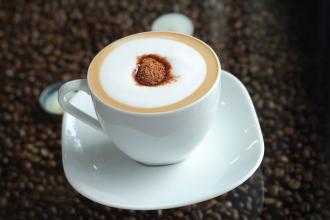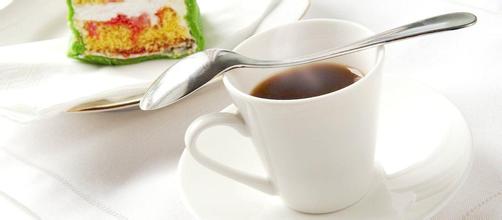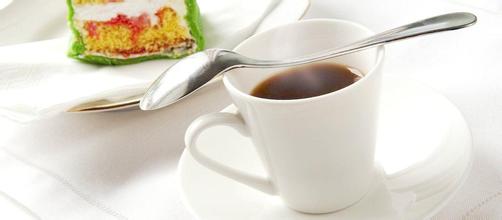Introduction to boutique coffee beans in manor area with fragrant Jamaican coffee flavor
For decades after 1872, Jamaica's economy flourished, but social and cultural development was suppressed by the colonial authorities. During the Great Depression, in particular, there was a great deal of discontent among all classes in Jamaica with the declining social conditions. In 1938, workers in Jamaica revolted. Later, the colonial authorities were forced to grant some autonomy to the region. In 1944, Jamaica held its first general election.
In 1958, Jamaica joined the West Indian Federation, but in 1961 voters rejected the Union Treaty, resulting in Jamaica's withdrawal from the rainforest climate. May to June and September to November are rainy seasons every year, with the most showers in January and May. December to March of the following year is the dry season, and the weather turns cool. 6-11 The half year at the end of the month is a period of frequent hurricanes and tropical storms, often hit by hurricanes. Rainfall is abundant in the central and northern regions, the climate is generally between 22-32 degrees, and the annual average temperature is 27 degrees. [6]
resources
Jamaica's resources mainly include bauxite, with reserves of about 2.5 billion tons, ranking fourth in the world, of which 1.5 billion tons can be mined and 15 million tons of bauxite can be produced annually, second only to Australia. [2]Other rich resources include copper, iron, lead, zinc and gypsum. The forest area of 265,000 hectares is divided into three counties: Cornwall, Middlesex and Surrey. The three counties are divided into 14 boroughs, of which Kingston and St Andrew form a joint borough, so there are actually only 13 boroughs. The names of the districts are as follows: Kingston and St Andrew's Union, St Thomas, Portland, St Mary, St Anna, Triloni, St James, Hanover, Westmoreland, St Elizabeth, Manchester, Clarendon, St Catherine
Why Blue Mountain Coffee tastes pure "secret": their coffee trees all grow on rugged hillsides, picking process is very difficult, non-local skilled women simply can not be competent. It's important to pick coffee beans that are ripe, as immature or overripe can affect the quality of coffee. The beans are shelled the same day and allowed to ferment for 12-18 hours. Coffee beans are then washed and sifted. after
The process is drying, which must be carried out on a concrete floor or thick blanket until the humidity of the coffee beans drops to 12%-14%. Then they are stored in special silos. When needed, it is taken out and roasted, and then ground into powder. These procedures must be strictly controlled, otherwise, the quality of coffee will be affected. Generally, coffee beans grown at low altitudes and other regions can only be called "Jamaica Mountain Beans" or "Jamaica Wash Beans." Compared with Jamaica Blue Mountain, the flavor is much different. However, these areas are twice the area of the real Blue Mountain region and account for 75% of the country's production. Therefore, when buying Jamaica coffee, do not think that you have bought Blue Mountain coffee.
Because Jamaica Blue Mountain is so famous, there are fake Blue Mountain coffee on the market, or simply called "Blue Mountain Coffee." Basically, this is a comprehensive product prepared by the store itself. There may be a real Jamaica Blue Mountain bean. In 1717, King Louis XV of France ordered coffee to be grown in Jamaica for twenty years.
Blue Mountain Coffee
Blue Mountain Coffee (6 photos)
In the mid-19th century, Sir Nicholas Lawes, Governor General of Jamaica, imported Arabica seeds from Martinique and began planting them in St. Andrew. To this day, St. Andrew's is one of the top three growing regions for Blue Mountain coffee in Jamaica, along with Portland and St. Thomas. Within eight years, Jamaica exported more than 375 tons of pure coffee. In 1932, coffee production peaked, harvesting more than 15000 tons of coffee. Blue Mountain coffee is the most superior coffee in the world. The weather, geological structure and terrain of Jamaica provide the ideal place. Ridges running through Jamaica extend to the east of the island, and the Blue Mountains rise to more than 2100 meters. The weather is cool, foggy and rainy frequently. Use this rich soil to harmonize with rainwater. Here, coffee trees are grown in a mixed cropping system, alongside banana and avocado trees on terraces. Some small farms are also planted. But even the region's largest planters are small-scale farmers by international standards, many of them smallholders whose families have been working for two centuries. The coffee industry in Jamaica faces a number of problems, such as the impact of hurricanes, increased labour costs and difficulties in mechanising terraces. Many small estates and farms are difficult to rationalize

Important Notice :
前街咖啡 FrontStreet Coffee has moved to new addredd:
FrontStreet Coffee Address: 315,Donghua East Road,GuangZhou
Tel:020 38364473
- Prev

Introduction to the characteristics of Panamanian Kasha Coffee Flavor Manor with Citrus and Flower aroma
The Panamanian flag was launched on November 3, 1904. The flag is rectangular and the ratio of length to width is 3:2. The flag consists of four rectangles of white, red and blue. White symbolizes peace; red and blue represent the former Panamanian Liberal Party and the Conservative Party respectively, and they are also symbols of the two parties' United struggle for the interests of the nation. The blue star on the white background on the upper left represents loyalty and integrity, and the red star on the white background on the lower right represents
- Next

Introduction to the characteristics of Ethiopian Coffee Flavor Manor with Honey Sweet aroma
Ethiopia is an ancient country with a history of 3000 years of civilization. The Hamite people who immigrated from the southern Arabian Peninsula were the earliest inhabitants. Monlinique I reigned in 975 BC. The Kingdom of Nubia was established in the 8th century BC. From the 1st century to 976 AD, the Ethiopian Empire, also known as the Kingdom of Aksum, was established in Aksum in the north. Christianity was introduced into Ethiopia in the 4th and 5th centuries.
Related
- Detailed explanation of Jadeite planting Land in Panamanian Jadeite Manor introduction to the grading system of Jadeite competitive bidding, Red bid, Green bid and Rose Summer
- Story of Coffee planting in Brenka region of Costa Rica Stonehenge Manor anaerobic heavy honey treatment of flavor mouth
- What's on the barrel of Blue Mountain Coffee beans?
- Can American coffee also pull flowers? How to use hot American style to pull out a good-looking pattern?
- Can you make a cold extract with coffee beans? What is the right proportion for cold-extracted coffee formula?
- Indonesian PWN Gold Mandrine Coffee Origin Features Flavor How to Chong? Mandolin coffee is American.
- A brief introduction to the flavor characteristics of Brazilian yellow bourbon coffee beans
- What is the effect of different water quality on the flavor of cold-extracted coffee? What kind of water is best for brewing coffee?
- Why do you think of Rose Summer whenever you mention Panamanian coffee?
- Introduction to the characteristics of authentic blue mountain coffee bean producing areas? What is the CIB Coffee Authority in Jamaica?

